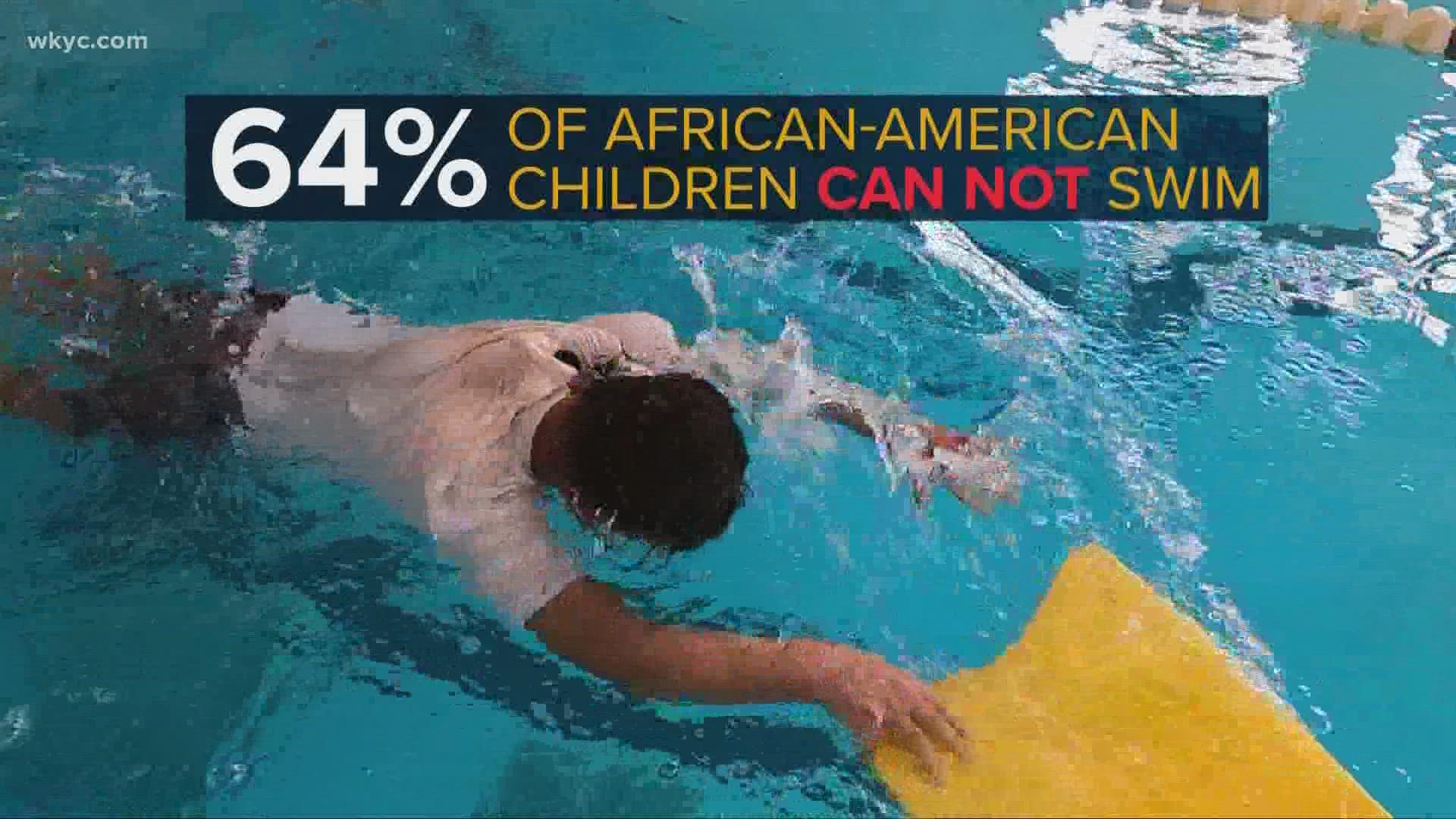WARREN, Ohio — Dalton Wahome loves to swim.
"It's really good to be safe and learn how to swim," he says, "but it's also a really fun sport to do."
And Dalton's father Virgil from the Lakewood YMCA is passionate about providing affordable swimming lessons for all kids.
"'How much is this going to cost me, and can I afford it?'" Virgil told us about what parents ask him. "That becomes a barrier right there."
In these waters, you'll find the intersection of race and class. According to USA Swimming, 64% of African American children cannot swim, compared with 45% of Hispanic children and 40% of white children.
The reason? Scholars point to the social history of America's public pools. Kent State University professor Molly Merryman's documentary "Invisible Struggles" explores the personal stories of segregation in Warren, Ohio.
"We as a nation seem to have this inability to factually and correctly address our past," she said.
In 1934, the gleaming Packard Pool opened in Warren's Packard Park. It was a whites-only public pool, and instead of desegregating the pool in 1945, the city decided to lease it to a private swim club.
The Veteran's Swim Club was supposed to be open to all veterans. However, all Black former soldiers were denied membership.
"African American kids weren't able to swim in the public pools," Merryman explained. "There was a rive, and there was more than one kid who drowned. Their option was one that was, in fact, deadly."
The local NAACP sued the city of Warren, and NAACP lawyer Thurgood Marshall successfully argued the case to desegregate Packard Pool. Marshall would later become the first African American U.S. Supreme Court justice.
Still, pools were unwelcome waters. In Cincinnati, whites threw nails and glass into pools, and in Florida they poured acid and bleach into the water. Cities closed their pools instead of integrating, and private pools took their place.
In 1969, a bold television moment sent a message when Mister Rogers shared a wading pool with Officer Clemmons on his iconic show. Segregation began to be dismantled, but prejudice remained.
But in 2016, Simone Manuel won Olympic gold in the 100m freestyle and broke historical barriers, becoming the first African American woman to medal in an individual swimming event. Here at home, the YMCA of Greater Cleveland is also working to close the minority gap with a $10,000 grant to provide free or low-cost swimming lessons.
"There's a huge generational gap that was lost," Virgil Wahome said, "and it's going to take time to get that back."
Making strides, one stroke at a time.
Watch our full "Turning Point" special in the player below:

